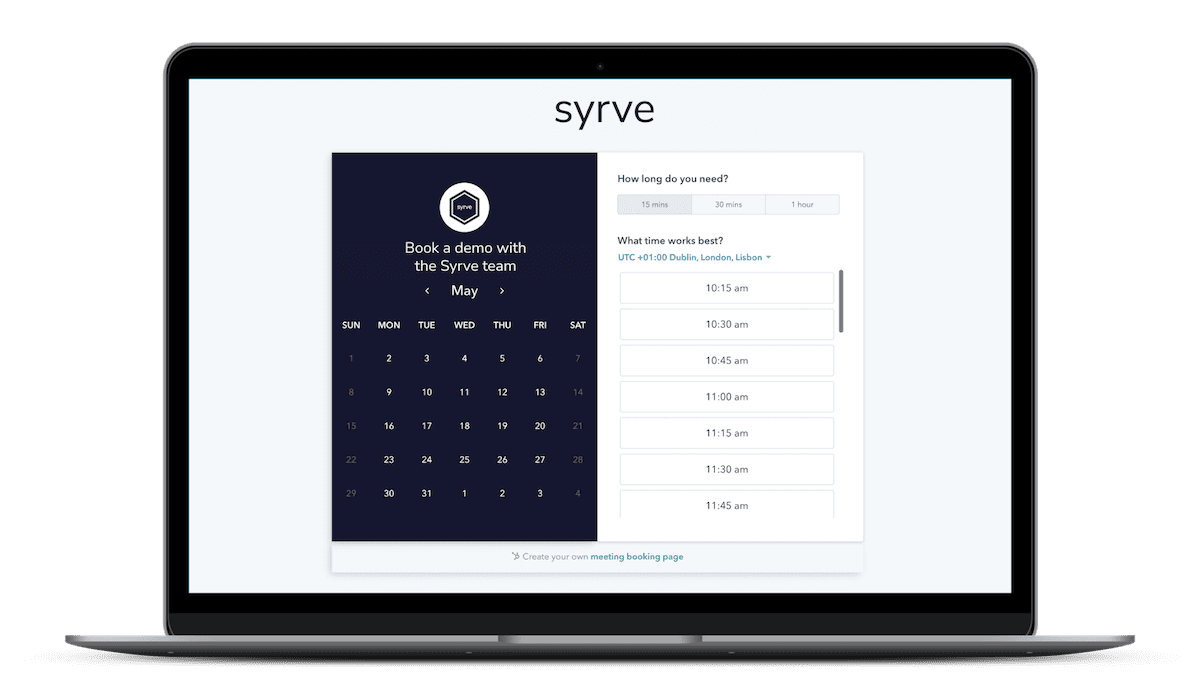Driving loyalty is critical for the long-term success of your restaurant. Without a loyal base of customers, revenue becomes unpredictable, you become more vulnerable to competitors and profit margins begin to suffer. So how do you drive loyalty among your patrons? By implementing the following 5 strategies.
1. Serve Quality Dishes Consistently
Your menu’s dishes are a direct expression of the values and identity of your restaurant. Well-prepared, flavoursome dishes will delight your patrons. Poorly executed, inconsistent dishes will put them off, perhaps for good.
Of course, serving quality dishes is a perfectly attainable target for any restaurant. The sourcing of quality ingredients, strict inventory management and sound quality control all play a part in maintaining high culinary standards. This is what’s typically required.
Ensure Your Menu is Seasonal
Dish consistency depends on a flexible menu that can be changed according to season. This means that your ingredients remain fresh and your dishes seasonally appropriate. You should also build strong relationships with local suppliers to secure the best produce.
Carefully Manage Your Inventory
The ability to monitor and manage your stock is another crucial area. With a comprehensive understanding of your inventory levels, it becomes much easier to order in supplies when ingredients run low. This is going to reduce the chances of dishes becoming unavailable – an unfortunate scenario that can prove extremely off-putting for guests. Regular stock monitoring and inspection are also extremely important in helping to identify ingredients that have spoilt.
Good inventory management requires a robust, transparent system that allows you to monitor stock levels and conduct accurate sales forecasts to prepare for demand fluctuations. To achieve this, many operators rely on tech solutions, which we’ll look at later on.
Provide Standardised Kitchen Prep Guidelines
Clear guidelines should able made available to kitchen staff setting out preparation steps, portion and ingredient sizes, cooking times and presentation. The aim is to ensure that every member of your kitchen staff can follow the same procedures when preparing dishes.
Conduct Quality Checks Regularly
An experienced head chef or kitchen manager should be in place to regularly oversee operations so that standards are kept every day. This should involve taste checking as well as the monitoring of portion sizes and presentation. Implementing these practices will help your restaurant deliver high-quality dishes on a consistent basis.
2. Deliver an Exceptional Service
In an era where customer expectations are higher than they’ve ever been, it’s incumbent upon you to deliver an excellent level of service. Otherwise, your restaurant simply won’t survive. Delivering an exceptional service is only possible in an organised, well-managed restaurant.
Among other things, you need in place proper POS systems to support order-taking, as well as favourable working conditions for you staff. And it’s your front-of-house where a failure to implement these measures is going to be most evident.
Run an Efficient Front-of-House
Your front-of-house team should operate efficiently at all times, even during peak hours - not just for the sake of short-term gain but for the longer-term benefits that come with a well-cultivated base of loyal patrons. To reassure your customers and improve trust, it should also be seen to be operating efficiently.
In order to achieve this, staff should have access to an intuitive, reliable POS system that allows for fast, error-free ordering and which can integrate delivery orders into a single production pipeline – this will eliminate bottlenecks and speed up ordering.
Good communication between your servers and kitchen staff is also imperative. This requires a transparent system such as an integrated KDS that allows both teams to keep track of orders as they come in. The result is that your servers can update the customers about the progress of their orders, while your chefs can focus on preparing dishes for timely service without being harried.
Ensure a Polite and Attentive Team
Being ‘polite’ and ‘attentive’ isn’t always easy for front-of-house employees, especially if they work long hours, feel unrewarded or unrecognised. There are of course many other challenges facing those eking out a living in such a difficult industry. But you have no control over these. What you do have control of, is how you run you manage your staff.
Morale and motivation can have a major impact on your server’s interactions with staff. It’s therefore important to foster open and respectful communication behind the scenes. Your team must feel comfortable in providing feedback and relaying any thoughts or concerns, be they personal or professional.
Achievements, hard work and personal milestones such as birthdays should also be recognised. To improve motivation, consider implementing a rewards system or sales-related bonus scheme. And to encourage a healthy work-life balance, have in place a staff management system for creating accurate but flexible staff schedules
3. Be Transparent In All That You Do
These days, the way in which you operate your restaurant will be of paramount importance to many of your customers. And your menu is one of the biggest clues as to how you go about your business. As well as its size and scope, the extent of your menu’s transparency can play a critical role. This means furnishing your patrons with as much useful information as is possible. The method in which your dishes are prepared is often a good place to start.
Mention Preparation Methods
Although not a common inclusion at quick-service or fast-casual establishments, for chef-driven, full-service restaurants, it’s good practice to include cooking techniques for each dish. Descriptors such as ‘fire-grilled’ ‘slow-roasted’ and the like, help convey your restaurant’s identity while also emphasising the craftsman ship that goes into each dish.
Include Dietary and Allergen Information
Over the past decade, diners have become extremely health-conscious. With the rise of social media, they’re also far more susceptible to the faddish nature of ‘wellness’ trends. But it doesn’t matter if your patrons’ particularness is motivated by necessity, or from a desire to appear sophisticated. Including dietary and allergen information about every dish is a must. Without it, you risk alienating your customers.
Provide Sourcing Information
Another effective way to improve trust is by including information about where you’ve sourced your ingredients, especially if they’ve been acquired locally. This ties in with the sustainability craze and also indicates that you utilise fresh ingredients.
4. Personalise the Customer Experience
Providing a good service and hoping for customers to return to your restaurant is no longer enough. As already mentioned, it’s essential to ensure efficiency and good service. But to truly drive repeat visits, you need to deliver a personalised experience that resonates with guests. It’s a strategy that’s been taken to a whole new level recently with the introduction of hyper-personalisation. Simply put, this refers to the use of advantaged tech coupled with customer insights to tailor almost every aspect of a diner’s experience. These are some of main steps.
Gather The Data
It all starts with data gathering - a hitherto complicated, maddening task that required operators to sift through data gathered from fragmented data sources such as reservation books, cash register/POS terminals, feedback cards, inventory records and employee notes. Thankfully, the introduction of fully-integrated restaurant management platforms put a stop to this. Integrating all of the above into one centralised ePOS system, operators now have easy access to consistent, reliable data that allows for the precise targeting of customers.
Customise Your Menu and Service
The latest POS terminals log detailed purchase data that allow you to provide customised menu options based on, say, dietary restrictions or specific food types. Personal milestones can also be recorded with the use of reservation systems. With the support of advanced restaurant analytics, it becomes easy to identify purchasing patterns and customer preferences.
Turbo-Charge Your CRM Efforts
Backed by the kind of data mentioned above, you should stay in touch with previous patrons via text, text and social media. To entice and attract, include personalised offers and recommendations that relate to previous orders, such as vegan or gluten-free options and so forth. Research as shown that for millennials especially, this form of communication can prove extremely effective.
5. Take Full Advantage of Next-Gen Tech
Each of the strategies mentioned here has the potential to improve customer loyalty dramatically. But as already touched on, each one can be a challenge to implement if you don’t have the right tech infrastructure in place. The most obvious and increasingly popular solution among operators is to rely on integrated restaurant management systems that do all of the heavy lifting. Here’s how.
Dish Consistency
In terms of dish consistency, the best tech platforms feature centralised ingredient, food prep and recipe management data that’s updated in real time. This is accessible to all staff, thus ensuring that dish quality and consistency is maintained.
Better Service
With a next-gen system in place, order-takers and servers are empowered with easy-to-use POS terminals that allow for efficient order and transaction processing. It’s also possible for servers to monitor order progress if they need to respond to customer queries.
Menu Management and Transparency
With menu management and engineering tools in place, the best cloud-based systems allow you to optimise and customise your menu in real-time, with all changes updated automatically. For multi-site operations, this can be an enormous time-saver. Staff can also be alerted when specific dishes contain potential allergens or ingredients so that they’re able to keep the customer informed.
CRM Tools
To drive customer engagement and ensure return visits, the more advanced tech systems feature customer management tools that allow you to offer a more personalised experience for guests. These include loyalty modules, as well as email and social media publishing tools for staying in touch with previous diners.
For more information about all of these tools, visit our home page.



